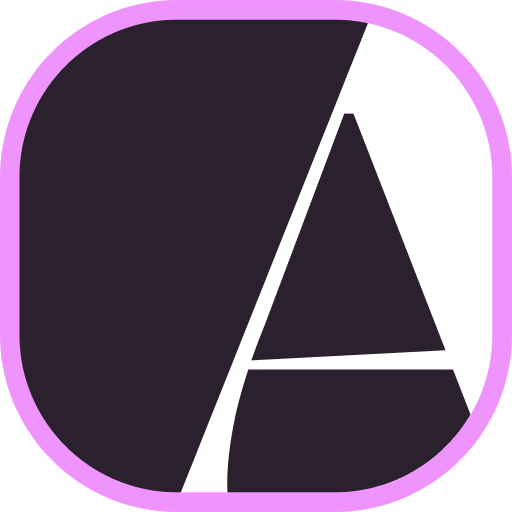Autumn 2021
Group members: Brianna Butler, Elina Assersson, Romina S. Housmand
This project is an institutional investigation that I and the members of my group conducted. It materialized in Map Master – a strategic board game that is meant to start a conversation. We wanted to raise awareness with a tool that shows what’s happening outside of HDK-Valand. I have created different roles for characters in the game and included vulnerabilities and abilities. I also created the guide with the rules and logistics of the game and the logo.


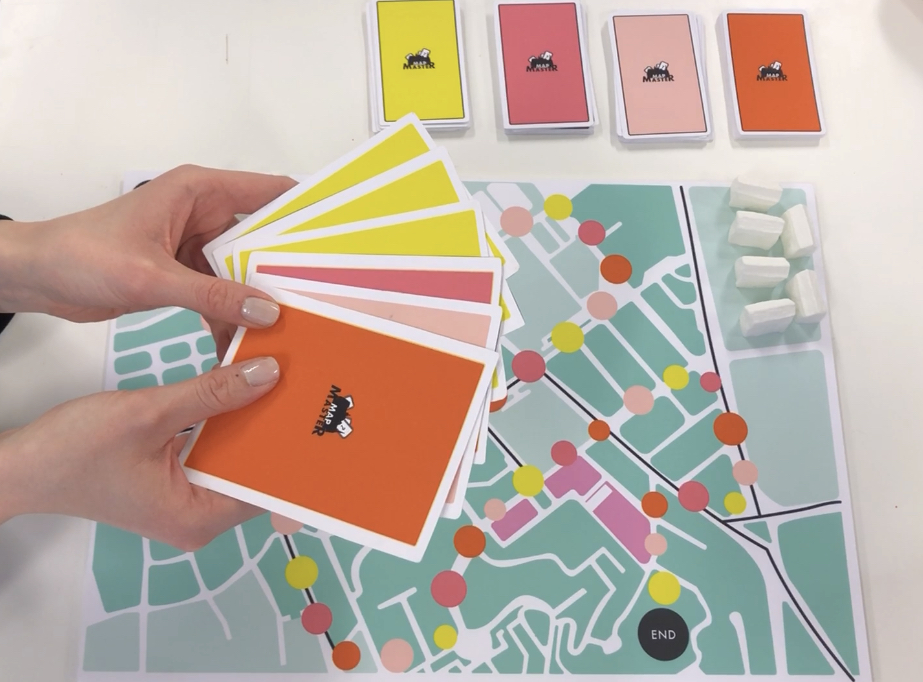
At the end we gave every role the opportunity to choose the place of the art institutions in the city of Gothenburg, and this side was meant to fix both the internal problem of communication and the cultural problem. Together with the board game, we created a timeline which shows a space relationship and history spanning time before the University of Gothenburg existed. This helps contextualize decisions and develop new ways of thinking of how to approach a beneficial solution.
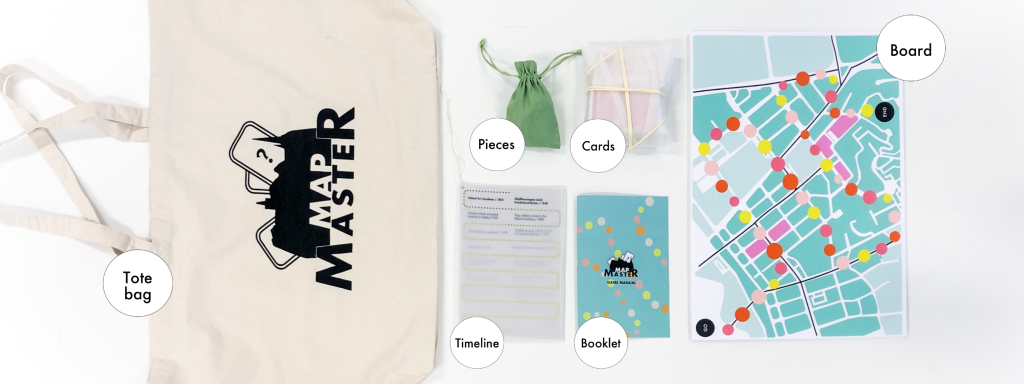
Creating understanding in the collaborative process is important, and I got to learn this since the beginning of working with my group. We got to know the hats we wear in projects, in order to see our strengths and weaknesses. We have been four designers with different backgrounds which added value to one another. In this sense, the group work was co-creative, and we were empathetic with each other’s needs and wants. I have created the logo, the illustrations for the cards and the cards themselves, as well as the logistics of the game and the booklet with instructions for it.
See game teaser:
In Map Master my group and I thought about both male and female actors, and about the hierarchical power structures, when thinking about the relationship among all the actors that would be affected by our design project in an organizational context as well as outside it: the dean, the faculty members, the students and the citizens in the city of Gothenburg. We added three versions to the citizen: the business owner, the curator and the passenger. We included these actors since we believe that they all have important roles in society, as well as different views, needs and powers. For example, the museum curator gets to choose how people see the artworks. We also thought the board game should be carried around the city, hence the tote bag. In this way, it is a posthuman approach since we encouraged people to go out and experience the city.
All of these human actors affect and are affected differently by the institutions at play (HDK, Röhsska Museet, Valand, the new concept of a building which is to be addressed as the merge, HSM, and the Konstmuseum). The collaborative process throughout the module helped us in defining a wider range of questions in relation with the need to consider the greater social impact. This wasn’t a small aspect to look at. Each person, group, or institution has an impact on the other, and affects more groups than those inhabiting the direct space.
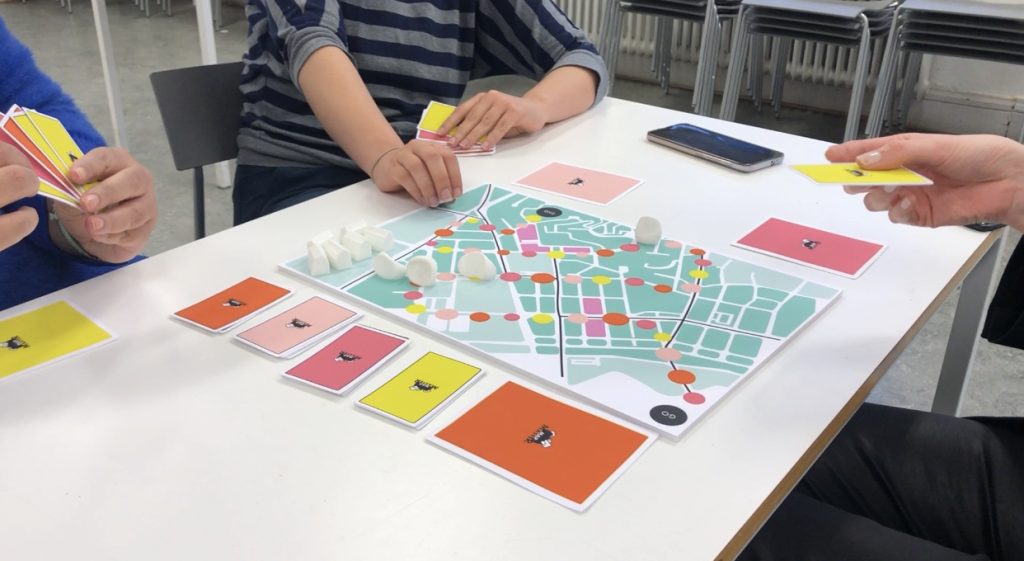
Design Thinking
I started by understanding design thinking during a five days Design Sprint. Since I was among otherpeople with different backgrounds than design, my role there was to lead the project and encourageothers to trust the process. But at the same time, I valued and acknowledged the role of the others. Having this interdisciplinary participation in the project’s conceptualization was a very good designthinking experience. I could definitely see the importance of having multiple actors with differentpoints of view. Stakeholders were included in the design process with the purpose of getting insights from them.
Next, in the conceptualization of Map Master, I found almost the same working environment, except that, even if my group members and I had different backgrounds, they were still connectedand now we are studying the same program. The inclusion of stakeholders was also something thatI found once again, since we took interviews to different actors that were affected by our designproject, or affected the places we were working with. This stage was very important in our process,since after having grouped all the interviews and putting them in opposition we found the mainproblem that we want to work on.
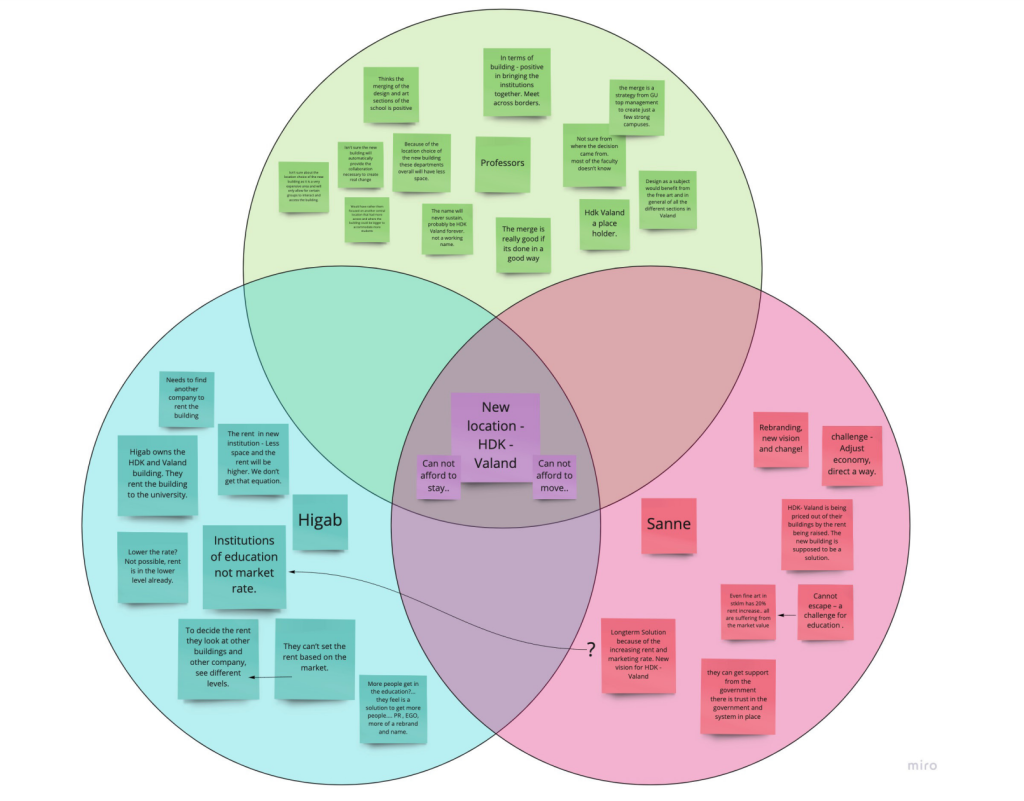
The issue being communication and undervaluation of the art and design institution in the city, we came up with a solution to make people empathetic and more prone to listen to each other’s arguments. By investigating the history of HDK and its geographical impact on the city and culture of art schools in Europe, we wanted to make people understand the importance of an art institution and the main reason why a new building is necessary for developing a new culture. This project is addressed both to decision makers within the institution and to the greater population of the city of Gothenburg. Taking the project one step further, this could have more versions when for example moved and redesigned in another city. It has a great sense of community and it could be used to address different problems but in the same practical way.
Equally important to mention, is that design thinking “is being promoted as a user-centered approach to innovation, inspired by a designer mindset and ways of working. It is argued that this approach can be applied to any area and any organization keen to increase their innovativeness.” (Carlgren, Elmquist and Rauth, 2014, p.405) Therefore, design thinking now in my practice is used more broadly in business and social sectors, being a solution-based process that relies on the feedback of the end user.
*Carlgren, L., Elmquist, M., & Rauth, I. (2014). Design thinking: Exploring values and effects from an innovation capability perspective. The Design Journal, 17: 403-423, DOI: 10.2752/175630614X13982745783000
